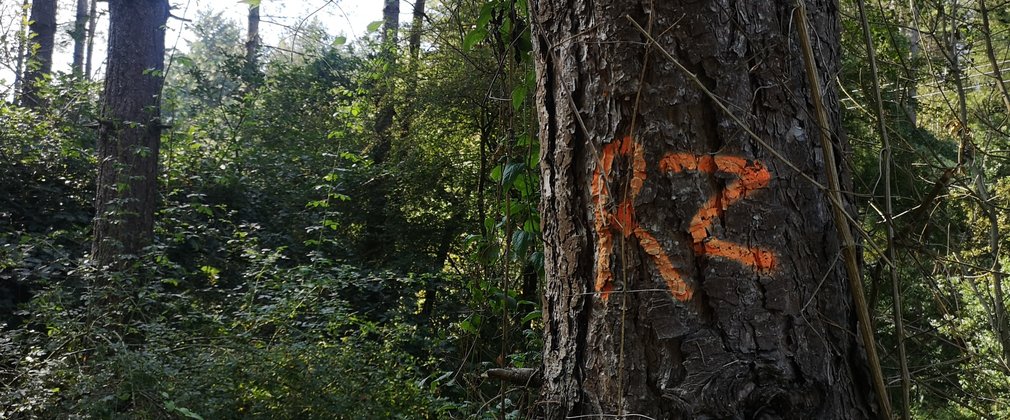Cann Wood is a working woodland producing sustainable timber. We are working here during autumn and winter 2025-26. This page provides more information about the work we're doing.
What is happening?
In the eastern part of Cann Wood, we are thinning the trees. This means removing selected trees for timber products and to give the remaining trees more space and light to grow to their full potential. Thinning also lets more light onto the forest floor, which improves the habitat for ground flora and the wildlife it supports.
We are also clearfelling trees in two small area of Cann Wood. This means that we are removing all the trees at once because they are showing signs of two diseases: Phytophthora lateralis and Phytophthora pluvialis. We are legally required to remove the infected trees to slow the spread of these diseases.
Caring for ancient woodlands
Much of Cann Wood is classified as a Plantation on Ancient Woodland Site (PAWS) which means that we are gradually managing it back to the way it would have been several hundred years ago. We will manage the forest to encourage native broadleaf species to re-establish.
Sustainable and renewable
The timber from Cann Wood is certified by the Forest Stewardship Council® (FSC®) and the Programme for the Endorsement of Forest Certification (PEFC) as being sustainably produced.
Can I still visit Cann Wood?
The most important thing for Forestry England is to keep the public, our staff, and contractors safe.
The forest is open for you to visit but there will be times when parts of the forest will be closed for us to work safely. These will be clearly signposted. Please follow all signs and instructions at all times. These are for your safety, whether or not you can see or hear us working. This will help us to finish working as quickly as possible.
Forestry work is very hazardous. A falling tree can weigh several tonnes and hit the ground at nearly 60mph. If a harvesting machine chainsaw snaps, it can fly through the forest like a bullet.
You can help to reduce the spread of tree diseases by brushing all soil and leaves from your boots, wheels, paws, and hooves before you leave the forest.
What about the wildlife?
Harvesting trees is an important part of sustainable forest management. Before we start any forestry work, we carry out thorough ecological surveys to check for species such as birds, mammals, rodents, invertebrates, flora, and fungi. This enables us to identify ecological constraints such as the presence of European Protected Species and Schedule 1 protected birds, which affect the time of year when certain operations can be carried out.
We consider these findings against complex factors including tree health, how the ground slopes, soil condition, and likely rainfall when planning work that will support our long-term management plan. There isn’t a single, perfect time of year for forestry work.
On this occasion, we have no choice but to remove the infected trees and will take every care to minimise wildlife disturbance. We will continue to check for wildlife while working.
Where can I find out more?
You can read our full forest plan for Cann Wood online. You can also find out more about Phytophthora pluvialis and phytophthora lateralis.
If you have any questions about our work in the Forest, please email us.

